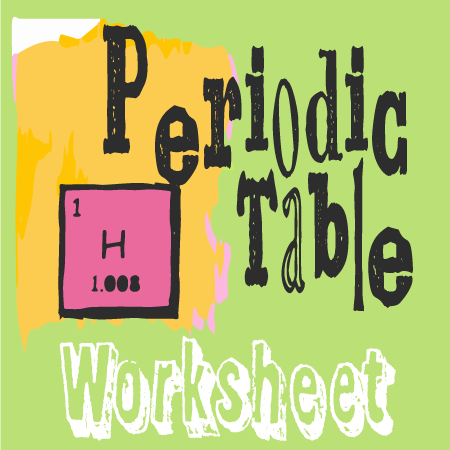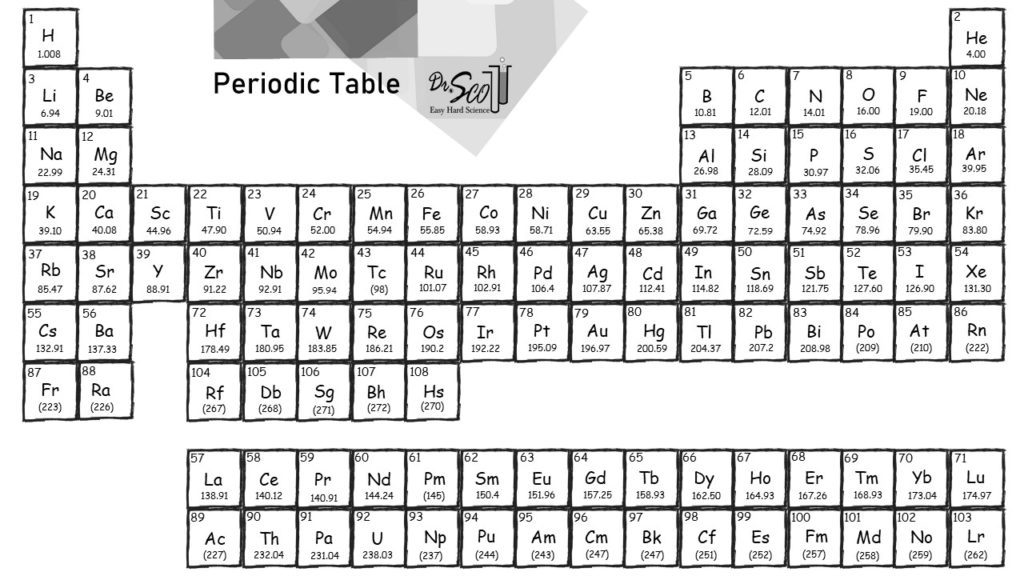
This page has a printable periodic table with mass numbers and atomic symbols. Separately, there is another version with names spelled out.
There is also a brief history so you can understand why different tables show different numbers of elements. It’s not such a simple answer!
If you’re looking for an interactive periodic table (that’s better than ptable.com), check out the ChemTalk Interactive Periodic Table.
Printable periodic tables, with and without the names spelled out, are below. Click the image to download the 1-page pdf file. Full size images are shown below.
Prefer YouTube style video lessons? Get unlimited access for a low monthly membership fee.
The table has mass, or molar mass, shown as the number in the bottom of each square. Generally, this number is the one with the decimal point. Note that some masses are in parentheses, usually towards the bottom of the table of elements, The parentheses basically mean that scientists don’t know much about these elements… because they are rare, disintegrate rapidly, and are often dangerous to work with.
The atomic number is in the upper left of each square, and the atomic symbol is the letter(s) in the middle. The atomic symbol could have one or two letters, and only the first letter is capitalized.
The periodic table periods are just the rows. That is, periods means rows. The columns are sometimes called Groups (with a capital G).

Same as above, except this table of elements has the names spelled out.

The table of elements shown here has 108 elements. The original table of the elements, credited to Dmitri Mendeleev in 1871, had only 56 elements. (See the original work of Dmitri Mendeleev here.) At that time, scientists were still discovering new elements almost every year. Before the year 1940, it was believed that only 92 elements existed. Element 92 is uranium, the biggest element that occurs naturally on Earth.
In 1940, a new element, plutonium, was created in a laboratory. It is element 94, making it bigger than uranium. As such, it’s highly unstable and unable to exist for very long. All elements above atomic number 92 are created artificially in laboratories, and generally they are extremely unstable and tend to disintegrate rapidly. As such, elements above 92 don’t really exist, except under special laboratory conditions. At least you won’t be finding any in this lifetime.
You might note in the periodic table the mass numbers are in parenthesis for elements 93 and above. The parenthesis are a scientific way of saying this number is guesstimated, at best, and we really don’t know much about these elements because they are artificial and tend to disintegrate rapidly. The elements above 92 are strange, like for example element 115 that was reportedly found at Area 51. There is a Netflix documentary about this topic entitled Bob Lazar: Area 51 & Flying Saucers.
You might find a table of elements showing element 115 or even 118 elements total. We have excluded elements above 108 on this periodic table for the simple reason that the larger elements don’t really exist in the real world.
One of the best internet resources is the dynamic periodic table at ptable.com. It has tons of info. The disadvantage is that it’s not printer friendly like those found here.